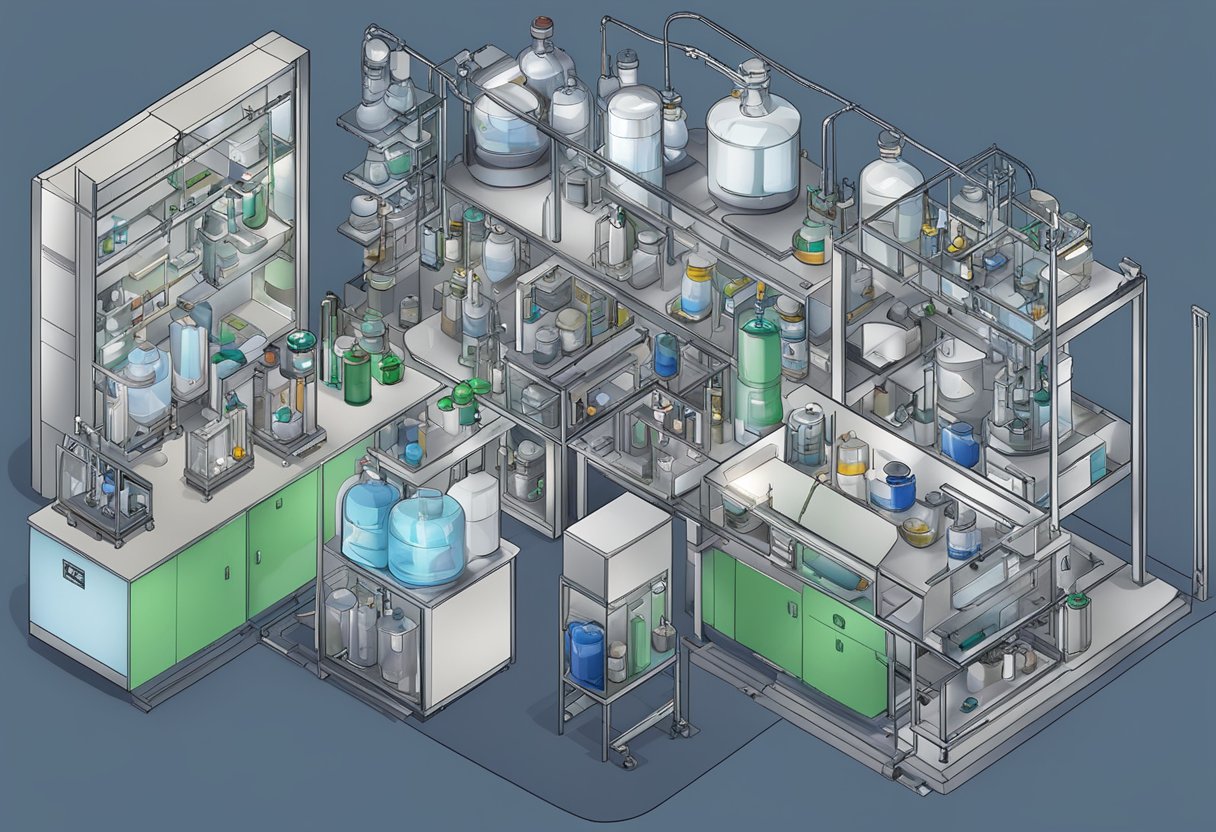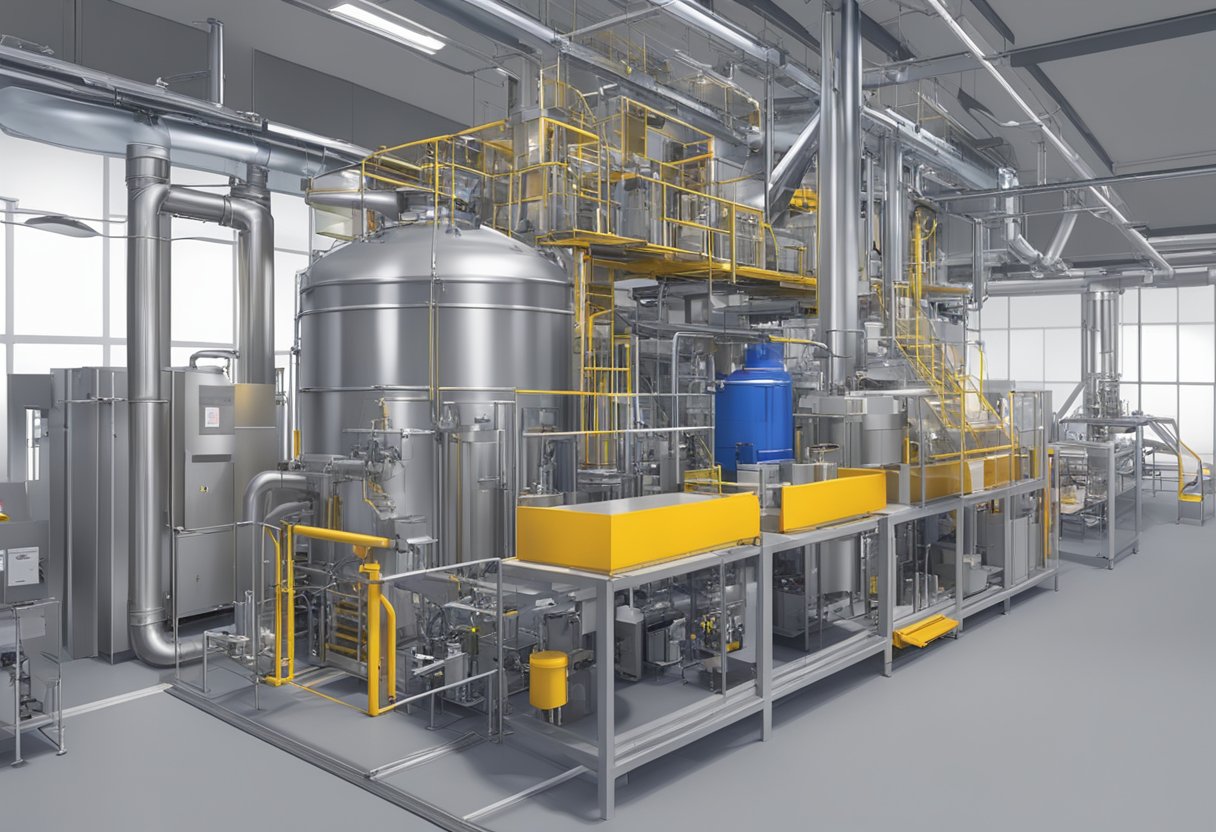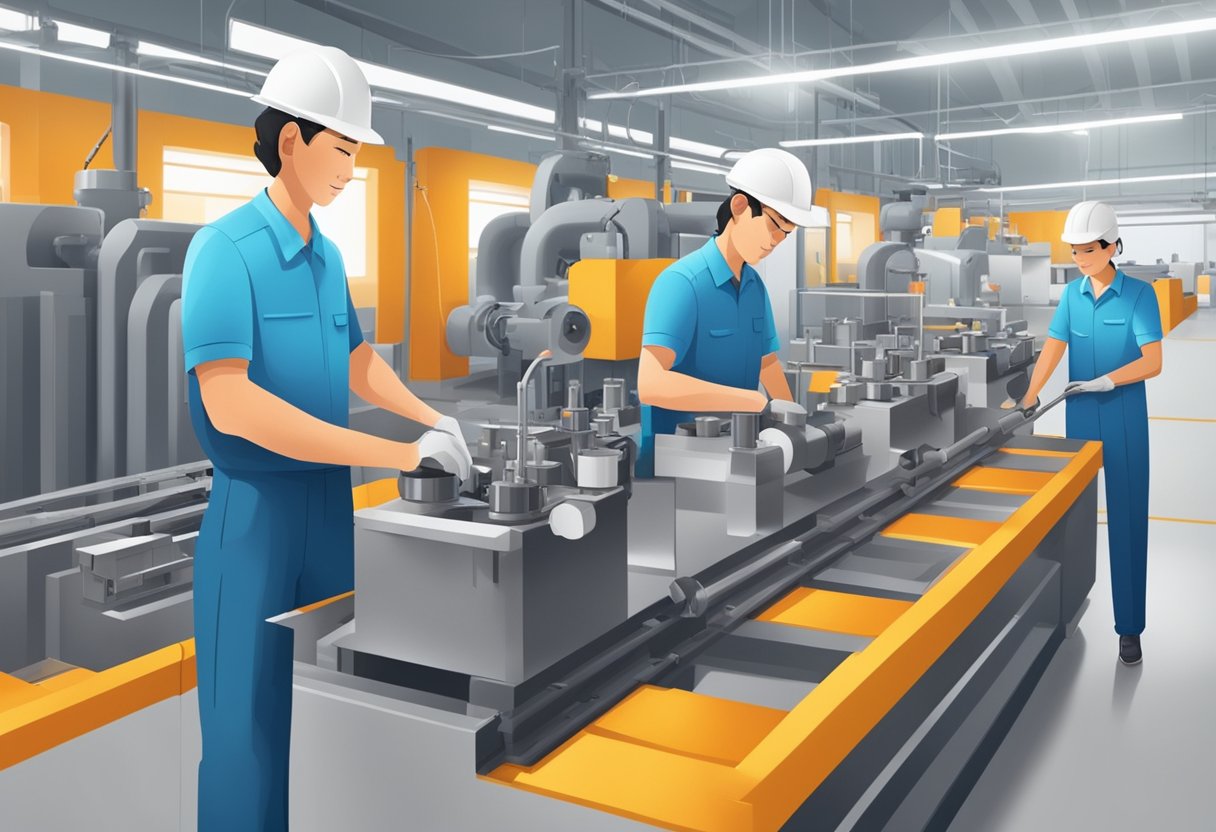TBZTD Accelerator: A Comprehensive Guide to Its Properties and Applications
20/01/2024
TBzTD accelerator is a chemical compound that is commonly used as a primary accelerator in the production of rubber products. It is a white or light yellow powder that is soluble in organic solvents such as acetone, benzene, and chloroform. TBzTD accelerator is known for its ability to improve the processing safety of rubber compounds while also enhancing their physical properties.

In recent years, TBzTD accelerator has gained popularity as a replacement for traditional accelerators such as thiurams, dithiocarbamates, and sulfenamides. This is because TBzTD accelerator offers a number of advantages over these traditional rubber accelerators, including lower toxicity, improved scorch safety, and better compatibility with other rubber chemicals. Additionally, TBzTD accelerator is more environmentally friendly than traditional accelerators, making it an attractive option for companies looking to reduce their environmental impact.
Chemical Properties of TBzTD

Molecular Structure
TBzTD, or tetrabenzylthiuram disulfide, has a molecular formula of C30H28N2S4 and a molecular weight of 544.82 g/mol. Its molecular structure consists of two benzyl groups attached to a central sulfur atom, which is in turn bonded to two thiuram groups. The molecule has a linear shape and is classified as a disulfide accelerator.
Chemical Composition
TBzTD is a sulfur-containing organic compound that belongs to the class of thiuram accelerators. It is a white to light yellow powder with a melting point of 122-125°C. TBzTD is soluble in organic solvents such as acetone, ethanol, and benzene, but insoluble in water.
TBzTD is commonly used as a secondary accelerator in combination with other primary accelerators such as MBTS and CBS. It is known for its excellent scorch safety, fast curing rate, and low toxicity. TBzTD is also used in the production of rubber products such as tires, hoses, and belts.
In summary, TBzTD is a disulfide accelerator with a linear molecular structure consisting of two benzyl groups and two thiuram groups. It is a sulfur-containing organic compound that is soluble in organic solvents but insoluble in water. TBzTD is commonly used as a secondary accelerator in rubber production due to its excellent scorch safety, fast curing rate, and low toxicity.
Applications of TBzTD

TBzTD accelerator has found its application in various industries due to its unique properties. In this section, we will discuss the two main applications of TBzTD: Rubber Acceleration and Industrial Uses.
Rubber Acceleration
TBzTD is widely used in the rubber industry as an accelerator. It is a non-nitrosamine alternative to traditional accelerators such as thiazoles and sulfenamides. TBzTD offers excellent scorch safety and cure rate properties, making it an ideal choice for high-temperature curing applications. It also provides good mechanical properties, low compression set, and improved heat aging resistance to rubber compounds.
Industrial Uses
Apart from the rubber industry, TBzTD also finds its application in various industrial uses. It is used as a crosslinking agent for polyolefin and polyester resins. It is also used as a curing agent for epoxy resins, which finds its application in adhesives, coatings, and composites. TBzTD offers excellent heat resistance and improved mechanical properties to these resins.
In addition to this, TBzTD is also used as a stabilizer for PVC and as an antioxidant for various polymers. Its unique properties make it an ideal choice for various industrial applications.
Overall, TBzTD accelerator offers a wide range of applications in the rubber industry and various other industries. Its unique properties make it an ideal choice for high-temperature curing applications, providing excellent mechanical properties and improved heat aging resistance.
Production Process of TBzTD

Synthesis Methods
TBzTD, or tetrabenzylthiuram disulfide, is a widely used accelerator in the rubber industry due to its excellent performance and compatibility with other accelerators. The production process of TBzTD involves the synthesis of tetrabenzylthiuram monosulfide (TBzTD-S) and its subsequent oxidation to form TBzTD.
The synthesis of TBzTD-S can be achieved through the reaction of benzyl chloride with sodium pentasulfide in the presence of a catalyst. The resulting product is then treated with sulfur to form TBzTD-S. The oxidation of TBzTD-S to TBzTD can be achieved through the use of various oxidizing agents such as hydrogen peroxide or sodium hypochlorite.
Quality Control
The production of TBzTD requires strict quality control measures to ensure the purity and consistency of the final product. One of the key quality control measures is the use of high-quality raw materials. The purity of the starting materials can greatly affect the yield and quality of the final product.
Another important quality control measure is the monitoring of reaction conditions such as temperature, pressure, and reaction time. The use of proper reaction conditions can improve the yield and purity of the final product.
After the synthesis of TBzTD, the product undergoes various analytical tests to ensure its quality and purity. These tests include gas chromatography, infrared spectroscopy, and nuclear magnetic resonance spectroscopy. The results of these tests are used to confirm the identity and purity of the final product.
In conclusion, the production process of TBzTD involves the synthesis of TBzTD-S and its subsequent oxidation to form TBzTD. The process requires strict quality control measures to ensure the purity and consistency of the final product.
Advantages of TBzTD

TBzTD accelerator has several advantages over other types of accelerators used in the rubber industry. Some of these advantages are discussed below.
Reduced Nitrosamine Risk
One of the primary advantages of TBzTD accelerator is its reduced risk of nitrosamine formation. Nitrosamines are carcinogenic compounds that can form during the vulcanization process of rubber products. TBzTD has been shown to have a significantly lower risk of nitrosamine formation compared to other accelerators such as TBBS and TMTD.
Faster Vulcanization Rates
TBzTD accelerator also offers faster vulcanization rates compared to other accelerators. This means that rubber products can be produced more quickly and efficiently, leading to increased productivity and reduced manufacturing costs. Additionally, faster vulcanization rates can result in improved product quality, as the rubber is able to cure more evenly and thoroughly.
Overall, TBzTD accelerator offers several advantages over other accelerators in the rubber industry. Its reduced nitrosamine risk and faster vulcanization rates make it a desirable option for rubber product manufacturers looking to improve their production efficiency and product quality.
Comparison with Other Accelerators
TBzTD vs TMTD
Tetramethylthiuram disulfide (TMTD) is a widely used accelerator in the rubber industry. However, it has been found to cause allergic reactions in some individuals. In contrast, TBzTD has been shown to have a lower potential for causing skin sensitization and is considered to be a safer alternative to TMTD.
Another advantage of TBzTD over TMTD is its longer scorch time. This means that TBzTD provides a wider processing window, allowing for more flexibility in the manufacturing process. Additionally, TBzTD has been found to provide better heat aging resistance and faster cure rates compared to TMTD.
TBzTD vs Sulfur-Based Accelerators
Sulfur-based accelerators, such as mercaptobenzothiazole (MBT) and 2-mercaptobenzothiazole disulfide (MBTS), have been widely used in the rubber industry for many years. However, these accelerators are known to cause blooming and staining, which can affect the appearance of the final product.
In contrast, TBzTD has been found to have a lower tendency to cause blooming and staining. Additionally, TBzTD provides better heat aging resistance and faster cure rates compared to sulfur-based accelerators.
Overall, TBzTD offers a safer and more efficient alternative to TMTD and sulfur-based accelerators in the rubber industry. Its superior performance and lower risk of skin sensitization make it an attractive option for manufacturers looking to improve their product quality and safety.
Safety and Handling
Storage Guidelines
TBzTD accelerator is a sensitive chemical compound that requires proper storage to maintain its quality and prevent degradation. It should be stored in a cool, dry, and well-ventilated area, away from sources of heat, ignition, and direct sunlight. The recommended storage temperature is between 5°C and 35°C. Exposure to high temperatures may cause the product to decompose and lose its effectiveness.
It is also essential to store TBzTD accelerator away from oxidizing agents, acids, and bases, as they may react with the compound and cause it to deteriorate. The product should be kept in airtight containers, preferably made of stainless steel, aluminum, or plastic, to prevent moisture and air from entering.
Handling Precautions
TBzTD accelerator is a hazardous substance that requires careful handling to prevent accidents and exposure to skin, eyes, and inhalation. It is recommended to wear protective clothing, including gloves, safety glasses, and a respirator, when handling the product.
In case of contact with the skin or eyes, the affected area should be washed with plenty of water and soap for at least 15 minutes. If irritation persists, medical attention should be sought immediately. If inhaled, the person should be moved to an area with fresh air and given oxygen if necessary.
It is also important to avoid eating, drinking, or smoking while handling TBzTD accelerator, as it may contaminate food and cause health hazards. The product should be handled in a well-ventilated area, away from sources of ignition, and in compliance with local regulations and guidelines.
In summary, proper storage and handling of TBzTD accelerator are crucial to ensure its quality and safety. Following the recommended guidelines and precautions can prevent accidents, injuries, and health hazards.
Environmental Impact
Biodegradability
TBzTD accelerator has been found to be biodegradable, meaning that it can be broken down by microorganisms in the environment. This is an important characteristic for chemicals used in industrial processes, as it reduces their impact on the environment. The biodegradability of TBzTD accelerator has been demonstrated in various studies, which have shown that the chemical can be broken down into harmless substances such as carbon dioxide, water, and other organic compounds.
Regulatory Status
TBzTD accelerator is not classified as hazardous to the environment by regulatory agencies such as the US Environmental Protection Agency (EPA) or the European Chemicals Agency (ECHA). However, like all chemicals, it is subject to regulatory oversight and must be handled and disposed of properly to minimize its impact on the environment. In addition, TBzTD accelerator has been included in the list of substances subject to the REACH regulation in the European Union, which requires manufacturers to provide information on the properties and uses of the chemical and to take measures to minimize any risks associated with its use.
Overall, TBzTD accelerator has a relatively low environmental impact compared to other chemicals used in industrial processes. Its biodegradability and non-hazardous status make it a suitable choice for use in various applications, provided that proper handling and disposal procedures are followed.
Market Trends
Demand Analysis
TBzTD accelerator is witnessing a surge in demand due to its superior properties such as high curing rate, low scorch, and excellent safety profile. The increasing demand for TBzTD accelerator can be attributed to the growing demand for tires in the automotive industry. According to a recent report by Grand View Research, the global tire market is expected to reach $319.5 billion by 2025, growing at a CAGR of 4.4%.
Moreover, the growing demand for green tires that offer high fuel efficiency and low carbon emissions is expected to drive the demand for TBzTD accelerator. TBzTD accelerator is a key component in the production of green tires as it reduces the curing time and enhances the performance of the tire.
Supply Chain Dynamics
The supply chain for TBzTD accelerator is complex and involves several players such as raw material suppliers, manufacturers, distributors, and end-users. The raw materials used in the production of TBzTD accelerator include benzothiazole, zinc oxide, and sulfur. The manufacturers of TBzTD accelerator are mainly located in Asia-Pacific, with China being the largest producer.
The distribution of TBzTD accelerator is mainly done through distributors and agents. The end-users of TBzTD accelerator are tire manufacturers, rubber product manufacturers, and other industries such as construction and mining. The supply chain for TBzTD accelerator is highly competitive, and the manufacturers are constantly striving to improve their production processes to reduce costs and increase efficiency.
In conclusion, the market trends for TBzTD accelerator are positive, with increasing demand from the tire industry and the growing trend towards green tires. The supply chain dynamics for TBzTD accelerator are complex and involve several players, with manufacturers in Asia-Pacific dominating the market.
Technical Challenges
Stability Issues
TBzTD accelerator has been found to exhibit some stability issues. The compound is known to degrade in the presence of certain chemicals and under certain storage conditions. For instance, it can undergo oxidation when exposed to air, leading to the formation of by-products that can affect its performance. Furthermore, it is sensitive to heat and light, which can cause it to decompose and lose its activity. To address these stability issues, manufacturers have developed various stabilizers and antioxidants that can be added to the formulation to enhance its shelf life and prevent degradation.
Compatibility Concerns
Another technical challenge associated with TBzTD accelerator is compatibility with other rubber chemicals. The compound has been found to interact with some of the commonly used accelerators and retarders, leading to changes in the vulcanization process and the properties of the final product. This can result in reduced efficiency and quality of the rubber compound. To overcome these compatibility concerns, rubber manufacturers may need to adjust the formulation or use alternative accelerators that are compatible with TBzTD. It is also important to note that the compound may not be suitable for all types of rubber, and its effectiveness may vary depending on the specific application and processing conditions.
In summary, while TBzTD accelerator offers several advantages over traditional accelerators, it also presents some technical challenges that need to be addressed. By understanding and mitigating these challenges, rubber manufacturers can optimize the performance and quality of their products.
Future Outlook
Innovations in Accelerators
The development of TBzTD accelerator has opened up new possibilities for the rubber industry. As research continues, there is potential for further innovations in the field of accelerators. Scientists are exploring ways to optimize the performance of TBzTD accelerator and to develop new types of accelerators that can improve the efficiency of rubber processing.
One of the major areas of focus is the reduction of cure time. With the increasing demand for faster production cycles, there is a need for accelerators that can reduce the time required for curing rubber compounds. Innovations in accelerator technology may provide solutions to this challenge.
Potential Market Growth
The rubber industry is expected to grow significantly in the coming years due to the increasing demand for rubber products in various sectors such as automotive, construction, and healthcare. The use of TBzTD accelerator is expected to increase in these sectors due to its superior performance and environmental benefits.
As the demand for rubber products grows, there is potential for the market for TBzTD accelerator to expand. The increasing focus on sustainability and environmental protection is also expected to drive the adoption of TBzTD accelerator, as it is a non-toxic and eco-friendly alternative to traditional accelerators.
In conclusion, the future outlook for TBzTD accelerator looks promising, with potential for further innovations in accelerator technology and market growth in the rubber industry.
Frequently Asked Questions
What are the cost implications of using TBzTD compared to other accelerators?
TBzTD is generally more expensive than other rubber accelerators, such as TMTD or CBS. However, the cost difference may be offset by its superior performance and lower dosage rate, resulting in lower overall rubber compound costs.
How does TBzTD performance compare to TMTD in rubber vulcanization?
TBzTD is a more effective accelerator than TMTD, particularly in low sulfur cure systems. It provides faster cure rates, better scorch safety, and reduced cure time. TBzTD also offers better heat aging resistance and improved compression set properties.
What are the advantages of using DTDM over TBzTD in rubber processing?
DTDM is a sulfur donor that can be used in place of TBzTD in some applications. It offers better heat aging resistance and improved compression set properties. However, TBzTD is a more effective accelerator and can provide faster cure rates and better scorch safety.
Can ZDEC or HMT be used as effective alternatives to TBzTD?
ZDEC and HMT are alternative accelerators that can be used in place of TBzTD. However, they may not offer the same level of performance and benefits as TBzTD. ZDEC is a slower accelerator and may not provide the same level of scorch safety as TBzTD. HMT is a less effective accelerator and may require higher dosages to achieve the desired cure rate.
What is the typical shelf life of TBzTD in storage?
TBzTD has a shelf life of approximately 1 year when stored in a cool, dry place. Storage conditions should be monitored to ensure that the product remains within its recommended temperature and humidity range.
How does TBzTD’s melting point affect its handling and application in manufacturing?
TBzTD has a high melting point, which can make it difficult to handle and disperse in rubber compounds. It may require higher mixing temperatures and longer mixing times to achieve proper dispersion. However, its high melting point can also provide benefits such as reduced scorch and improved cure rates.




